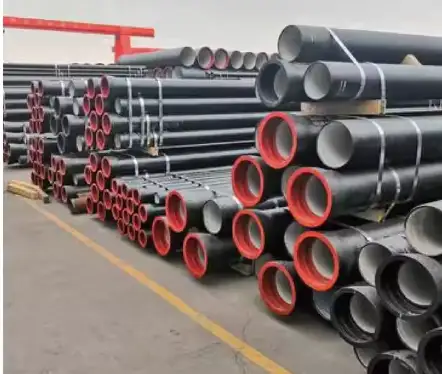Austempered ductile iron (ADI), a high-performance material derived from ductile iron, is renowned for its exceptional combination of hardness, toughness, and wear resistance. Engineers and designers often ask: How hard is austempered ductile iron? This article explores ADI’s mechanical properties, compares it with competing materials, and addresses technical questions to help you understand its industrial value.

What Is Austempered Ductile Iron?
Austempered ductile iron is a heat-treated form of ductile iron. Through a controlled austempering process—quenching the iron in a salt bath at specific temperatures—it develops a unique microstructure of ausferrite (a mix of acicular ferrite and carbon-rich austenite). This structure grants ADI superior mechanical properties compared to conventional ductile iron.
Key Properties of ADI:
-
Hardness: 250–500 HB (Brinell Hardness)
-
Tensile Strength: 800–1600 MPa
-
Elongation: 1–15%
-
Impact Resistance: 50–200 J (at room temperature)
Measuring the Hardness of ADI
Hardness is a critical metric for assessing wear resistance and load-bearing capacity. ADI’s hardness varies based on its heat treatment parameters:
| Austempering Temperature (°C) | Hardness (HB) | Tensile Strength (MPa) | Application Example |
|---|---|---|---|
| 230–270 | 450–500 | 1400–1600 | Mining crusher jaws |
| 270–320 | 350–450 | 1200–1400 | Automotive gears |
| 320–380 | 250–350 | 800–1200 | Agricultural machinery parts |
Note: Lower austempering temperatures yield harder, more wear-resistant ADI, while higher temperatures improve ductility.
ADI vs. Other Materials: Hardness Comparison
The table below highlights how ADI stacks against common engineering materials:
| Material | Hardness (HB) | Tensile Strength (MPa) | Impact Resistance (J) | Cost Efficiency |
|---|---|---|---|---|
| Austempered Ductile Iron | 250–500 | 800–1600 | 50–200 | High |
| Standard Ductile Iron | 150–300 | 400–900 | 10–30 | Moderate |
| Carbon Steel (AISI 1045) | 170–210 | 585–900 | 25–50 | Low |
| Aluminum Alloy (6061-T6) | 95–100 | 310–345 | 5–20 | Moderate |
| Cast Iron (Gray Iron) | 180–250 | 200–400 | 2–10 | Low |
ADI outperforms most materials in hardness-to-toughness balance, making it ideal for high-stress applications.
Factors Influencing ADI Hardness
1. Chemical Composition
-
Silicon (2–3%): Promotes graphite nodule formation.
-
Manganese (<0.3%): Minimizes carbide formation.
-
Copper/Nickel (0.5–1.5%): Enhances hardenability.
2. Heat Treatment Process
-
Austenitizing: Heating to 850–950°C to dissolve carbon.
-
Quenching: Rapid cooling in a salt bath (230–400°C).
-
Holding Time: 1–4 hours to stabilize the ausferrite matrix.
3. Section Thickness
Thicker sections cool slower, risking pearlite formation and reduced hardness.
Industrial Applications of ADI
ADI’s hardness and durability make it suitable for:
-
Automotive Components:
-
Gears, crankshafts, and suspension parts.
-
-
Mining Equipment:
-
Crusher liners, drill bits.
-
-
Railway Systems:
-
Brake discs, wheel hubs.
-
-
Construction Machinery:
-
Excavator buckets, hydraulic components.
-
6 Common Questions About ADI Hardness
1. Why Is ADI Harder Than Regular Ductile Iron?
ADI’s ausferrite microstructure, achieved through austempering, provides a unique blend of ferritic strength and austenitic ductility. Unlike conventional ductile iron, which has a pearlitic or ferritic matrix, ADI’s needle-like ferrite and stabilized austenite block dislocation movement, enhancing hardness without sacrificing toughness.
Example:
A study by the American Foundry Society showed ADI gears withstand 300% more cyclic loads than standard ductile iron gears.
2. Can ADI Be Machined After Heat Treatment?
Yes, but machining hardened ADI (450+ HB) requires carbide-tipped tools and slow speeds. Pre-hardened machining (at 250–350 HB) is more cost-effective. Post-machining stress relief is recommended to prevent distortion.
Industry Tip:
Use ceramic inserts for finishing operations on high-hardness ADI.
3. How Does ADI Compare to Forged Steel in Wear Resistance?
ADI’s wear resistance often exceeds forged steel due to its strain-hardening austenite phase. Under friction, the surface austenite transforms to martensite, creating a hardened layer.
Case Study:
ADI excavator buckets lasted 2.5x longer than AISI 4140 steel buckets in abrasive soil conditions.
4. What Limits the Maximum Hardness of ADI?
Excessive hardness (>500 HB) reduces ductility, increasing fracture risk. The optimal range balances wear resistance and impact strength. Alloying elements like molybdenum can push hardness limits but raise production costs.
5. Does ADI Lose Hardness at High Temperatures?
ADI retains hardness up to 300°C. Above this, austenite decomposes, reducing strength. For high-temperature applications (e.g., engine exhausts), nickel-alloyed ADI is preferred.
6. How to Test ADI Hardness Accurately?
Use Brinell or Rockwell C scales for bulk hardness. Microhardness testing (Vickers) evaluates localized phases. Always prepare samples by grinding/polishing to avoid surface irregularities.
References:
- Austempered Ductile Iron (ADI) – Wikipedia
- American Foundry Society (AFS) – Industry Research and Standards
- ASTM A897 – Standard Specification for Austempered Ductile Iron Castings
- Material Properties and Applications of Austempered Ductile Iron – AZoM
- ASM International – Materials Standards and Technical Resources
